Lighter Metals Guide: Properties, Processing, and Material Selection
 Jun 28,2025
Jun 28,2025

This article is going to be very important and interesting for you because it introduces many new metals with impressive properties. With advancements in either equipment or materials, lighter materials have become a priority, especially for the aerospace industry. Lighter materials save weight, fuel consumption and hence the cost. This article presents various lightweight metals, their processing, applications, and their selection for specific applications.
What Defines a "Light" Metal?
Generally, if the density of the metal is under 5 g/cm³, it is considered a light metal. You can say it is a thumb rule. But engineers do not prioritise this rule. If a metal has a high strength-to-weight ratio, it is called a "light" metal. For instance, Al has a density of 2.7 g/cm³ and high strength, which is why very important for the aerospace industry. Steel has a density of 7.7 g/cm³, so a heavy metal.
Periodic-Table Lightweights vs Structural Light Metals
There are two types of materials when we say lightweight materials:
Periodic-Table Lightweights
- These are the lower atomic mass elements in the periodic table, such as lithium, sodium, potassium, etc.
- They have very low density; for instance, the density of lithium is 0.53 g/cm³.
- These materials are very reactive, flammable and soft, so we cannot use them for structural applications. Lithium is only used for batteries.
Structural Light Metals
These are lightweight metals but engineered for advanced applications, such as the strength-to-weight ratio for aerospace applications. You can take the example of aluminium, which has a density of 2.7 g/cm3 but is still used in aeroplanes for structural parts.
The Role of Density in Designing Your Metal Project
The density of any material is important because it is the main criterion for the selection of materials for any application. It influences three main properties of any material. Let's read the pivotal role of density:
Stiffness
Low-density materials <2.7 g/cm3 exhibit lower stiffness. So, to use a low-density material in that application where high stiffness is required, we integrate through structural changes such as honeycomb, ribs, etc.
Fatigue
Different low-density materials show different fatigue behaviour. For instance, Al shows excellent fatigue strength, but Mg requires additional attention.
Manufacturability
Lighter metals are easier to machine, but the risk of deformation remains higher due to lower strengths.
Specific Strength = Ultra Tensile Strength (MPa)Density (g/cm3)
Density-to-Strength Chart for Fast Comparison
Through the following table, you can quickly compare the mechanical properties of many materials.
|
Metal |
Density (g/cm³) |
Tensile Strength (MPa) |
Elastic Modulus (GPa) |
Specific Strength (MPa·cm³/g) |
Notes |
|
Lithium |
0.53 |
15 |
4.9 |
28.3 |
Too soft/reactive for structural use |
|
Magnesium (AZ31) |
1.74 |
255 |
45 |
146.6 |
Lightest structural metal; flammable |
|
Aluminium (6061) |
2.70 |
310 |
69 |
114.8 |
Best balance of cost & performance |
|
Titanium (Grade 5) |
4.42 |
1000 |
110 |
226.2 |
Highest strength-to-weight ratio |
|
Beryllium |
1.85 |
370 |
287 |
200.0 |
|
1.Aluminium Alloys: 88 % Chosen
In lightweight metals, Al is the most common, with 88% of engineers preferring Al while working with lightweight metals. The reason is the balance between densities, manufacturability and mechanical properties. It is a low-density metal, i.e. 2.7 g/cm³, but exhibits 200-500 MPa tensile strength. It is naturally corrosion-resistant, cost-effective and easily recyclable.
Key Al Grades for CNC Machining (2024, 5052, 5083, 6061, 7075)
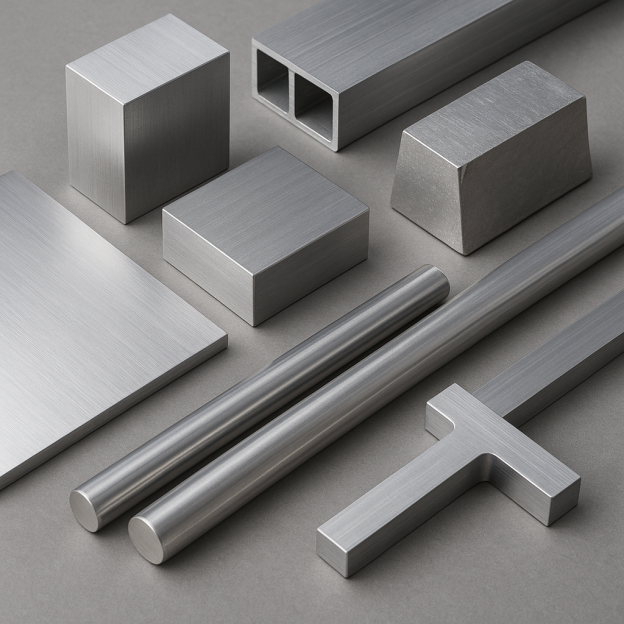
In the following table, you can see multiple common alloys of Al which are easily machinable for optimised CNC applications.
|
Grade |
Chemical Composition |
Yield Strength (MPa) |
Anodizing Behavior |
Typical CNC Tolerance |
Best For |
|
2024 |
Cu (4.4%), Mg (1.5%), Mn (0.6%) |
324 |
Poor (copper causes discolouration) |
±0.05 mm |
Aerospace fasteners, truck wheels |
|
5052 |
Mg (2.5%), Cr (0.25%) |
193 |
Excellent (clear finish) |
±0.1 mm |
Marine hardware, electronic enclosures |
|
5083 |
Mg (4.5%), Mn (0.7%) |
228 |
Good (slightly cloudy) |
±0.15 mm |
Shipbuilding, cryogenic tanks |
|
6061 |
Mg (1.0%), Si (0.6%), Cu (0.28%) |
276 |
Excellent (clear/hard coating) |
±0.025 mm |
Automotive parts, bike frames |
|
7075 |
Zn (5.6%), Mg (2.5%), Cu (1.6%) |
503 |
Fair (yellowish tint) |
|
|
CNC Machining Aluminium Alloys
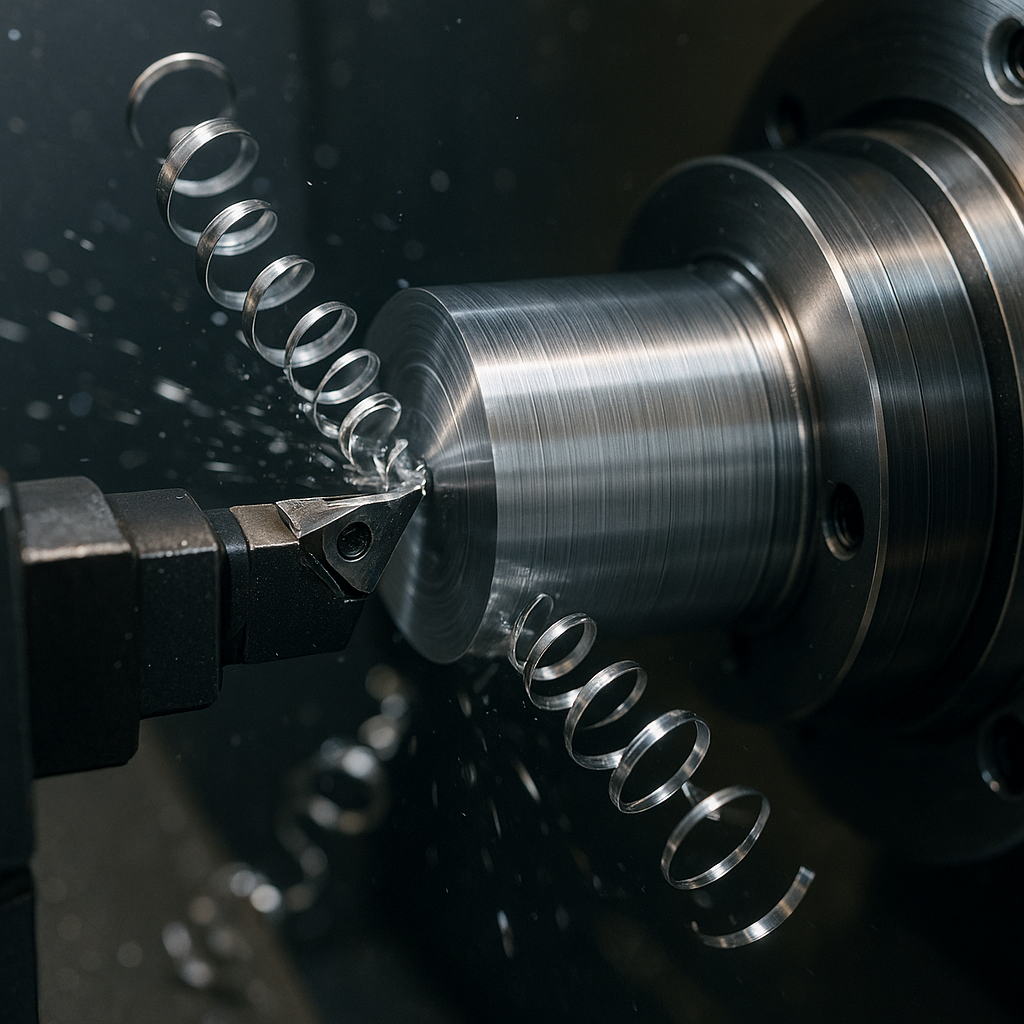
When we say Al is the king of CNC machining, it is because:
- 3X Faster machining than steel.
- 50% Longer tool life vs. Titanium.
- Lower Energy consumption per part.
Advantages
- High-Speed Machining Capable
- Excellent Chip Control
- Superior Surface Finish
- Complex Geometries Easy
Drawbacks
- Low cutting forces prevent part deflection
- Thin walls (down to 5mm) are achievable
Aluminium Alloys for Common Lightweight Applications
- Automotive: 6061-T6 for chassis (40% lighter than steel), 5052 for panels.
- Drones: 7075-T6 for high-strength frames, 6061 for budget builds.
- Heat Sinks: 6063 for extruded fins, 1050 for pure thermal conductivity.
- Key Benefits: Lightweight, corrosion-resistant, excellent machinability.
- Emerging Uses: 3D-printed lattices, multi-material hybrid designs.
2.Titanium Alloys: 10 % Chosen
Titanium is 40% lighter than steel, having a density of 4.5 g/cm³, and still provides higher strength than steel. 10% of world applications use Ti because it is naturally corrosion resistant, bio-compatible and can perform at higher temperatures. Its use is less than Al because it is 5-6X expensive than Al.
Common Titanium Grades
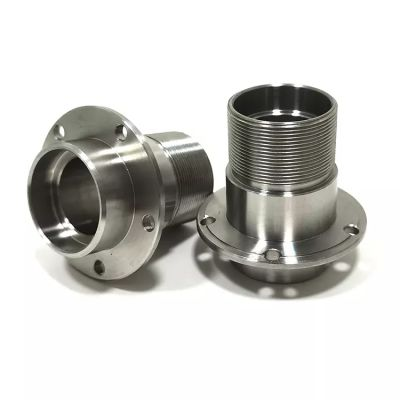
Below are some titanium grades commonly used in CNC machining.
- Grade 1 (UNS R50250)
It is 99.5% pure Titanium. It is the softest and most ductile of all Ti grades. It comes with lower strength (240-370 MPa), excellent corrosion resistance and formability. You can use it for marine and chemical applications.
Grade 2 (UNS R50400)
- Most versatile pure titanium
- Excellent corrosion resistance
- Ideal for heat exchangers, medical devices
- 345-480 MPa tensile strength
Grade 3 (UNS R50550)
- Stronger than Grade 2
- Moderate formability
- Used in aerospace, pressure vessels
- 450-600 MPa tensile strength
Grade 4 (UNS R50700)
- Strongest pure titanium grade
- Limited cold forming
- Surgical implants, chemical equipment
- 550-750 MPa tensile strength
Grade 5 Ti-6Al-4V Alloy (UNS R56400)
- Premium titanium alloy
- Aerospace/medical standard
- 895-930 MPa strength
- Heat treatable for enhanced properties
CNC Machining Challenges and Solutions
Titanium is a difficult-to-machine metal because it has lower thermal conductivity, which causes heat concentration in the cutting zone. Secondly, it's a work-hardening phenomenon that makes machining difficult. We can tackle these challenges using sharp tools and high-pressure coolant.
Titanium Alloys for Light yet Strong Parts
Although Ti is a lightweight metal, it is still used in aerospace, medical, etc. industries because of its excellent mechanical properties. Such as:
- You can use it in a Jet engine for aerospace compressor disks.
- It is used for high-strength fasteners for marine applications.
- It is used in high-strength suspension systems and many other applications.
3.Magnesium Alloys: 2 % Chosen
You get 35% weight savings due to lower density, i.e. 1.74 g/cm³. aluminium, but magnesium's flammability (ignites at 450°C) scares many engineers. It's perfect where weight is critical, like aerospace, but requires strict safety protocols.
Popular Casting Grades (AZ91D, AM60)
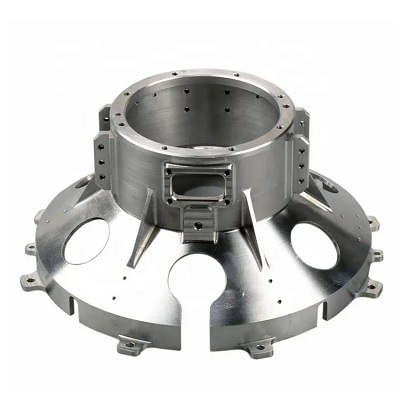
These are the common casting grades of Mg:
|
Grade |
Tensile Strength |
Castability |
Best For |
|
AZ91D |
230 MPa |
Excellent |
Thin-wall parts (laptop cases) |
|
AM60 |
220 MPa |
Good |
Impact-resistant parts (car seats) |
Machining Safety Guidelines
For risk-free machining, follow the following instructions:
- Chip Evacuation:Never let chips pile up; they can self-ignite.
- Coolants:Use fire-retardant fluids (no water-based options).
- Tool Geometry:Sharp, polished tools reduce heat buildup.
Magnesium Alloys Applications
- You'll find magnesium in race car wheels(weight savings trump cost) and aviation components (like helicopter transmission housings).
- Its vibration-damping also makes it ideal for power tool bodies.
- But it's banned in many consumer products due to fire risks.
Lighter Metals Comparing in Custom Projects
When designing custom components, your material choice directly impacts performance, cost, and manufacturability. Let's examine how lighter metals compare in real-world applications, with a focus on bicycle engineering solutions.
The Most Common Materials in The Custom Bike Parts
Aluminium wins with its unbeatable value-to-performance ratio:
- 30% lighter than steel
- 50% cheaper than titanium
- Zero fire risk vs magnesium
While titanium offers elite durability and magnesium provides ultimate lightness, aluminium delivers 90% of their benefits at half the cost, explaining why it dominates 9/10 bike builds.
Emerging Light Metals: Properties and Applications
You're looking at tomorrow's materials today—space-age alloys and advanced composites pushing weight savings beyond conventional metals. While not yet mainstream, these innovations solve specific challenges where every gram counts.
Lithium-Magnesium Alloys for Space Structures
Ultralight (under 1.5 g/cm³) but brittle. These alloys serve exclusively in aerospace applications like satellite components, where weight reduction outweighs ductility concerns.
Beryllium and Be-Cu Hybrids for Precision Optics
The ultimate stiffness-to-weight solution for telescope mirrors and guidance systems, though toxicity and export restrictions limit accessibility to the defence and aerospace sectors.
Lightweight Strong Material Replacement
Carbon fibre and high-performance plastics now outperform metals in select applications, offering better weight savings without corrosion, revolutionising everything from medical implants to electric vehicle components.
Machining Processing of Lighter Metals (Casting, Forming, CNC, and 3D Printing)
You must match the manufacturing method to the properties of each metal. Aluminium performs well across all processes (casting, CNC, 3D printing), while titanium requires specialised expertise, particularly for precision CNC machining and additive manufacturing, due to its unique challenges.
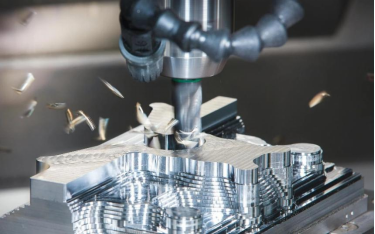
Die Casting vs Investment Casting for Mg and Al
Al and Mg are common choices in casting due to their lower melting points. For thin walls (under 1mm), choose die casting. For precision and low porosity, investment casting works better, ideal for complex aluminium parts.
Hot and Cold Forming Windows
Aluminium forms well in the range of 200-500°C. Titanium requires 700-900°C to avoid cracking. Magnesium needs careful heating to prevent ignition.
CNC Machining Processing
For aluminium, you'll achieve the best results with:
- Speed:500-4,000 SFM
- Feed:1-0.3 mm/tooth
- Tools:3-flute carbide end mills
Titanium demands precision:
- Speed:30-100 SFM (slow to prevent work hardening)
- Tools:Sharp, coated carbide with high-pressure coolant
Titanium machining requires expert shops like TUOFA to avoid costly errors. Magnesium needs fire-safe protocols.
Additive Manufacturing
Aluminium prints well with LPBF. Titanium (DMLS) offers aerospace-grade parts, but it costs more. Avoid magnesium—flammability risks remain.
How to Design Your Lighter Metal Project?
Smart material selection balances performance, cost, and manufacturability. To optimise your design, carefully evaluate these key factors while considering your project's specific requirements and constraints.
1. Load Requirements
You must match strength and stiffness to expected loads. For high-stress cyclic applications (like Ti-6Al-4V in Engine compressor blades), titanium's fatigue resistance outperforms aluminium.
2. Joining Process
Your joining method dictates alloy choice. Weldable grades like 6061 aluminium work best for conventional fabrication, while titanium requires specialised techniques like electron beam welding or laser welding to prevent contamination and maintain structural integrity in critical applications.
3. Corrosion Defence
Evaluate exposure—marine needs 5000-series aluminium, while indoor parts can use cheaper 6000-series. Titanium excels in harsh chemical environments.
4. Manufacturing Fit
Align your alloy with production methods. Aluminium casts well; titanium suits CNC or additive. Avoid magnesium for complex geometries.
5. Cost per Kg vs Machined-Part Cost
According to the following table, Al remains the most cost-effective light metal in every aspect. Ti is difficult to machine, so the most expensive metal.
|
Metal |
Raw Cost ($/kg) |
Machining Cost Factor |
Best For |
|
Aluminum |
$3-5 |
1x (baseline) |
High-volume production |
|
Titanium |
$30-50 |
3-5x |
Performance-critical parts |
|
Magnesium |
$5-8 |
2x |
Weight-sensitive prototypes |
Conclusion
Choosing the right lightweight metal, such as aluminium for cost-efficiency, titanium for strength, or magnesium for extreme lightness, requires balancing performance, budget, and safety. Remember: 90% of projects succeed with aluminium, while titanium needs experts like TUOFA for precision machining. Let this guide help you make smarter material decisions for stronger, lighter results.
FAQ
Which metal is the lightest structural option?
Magnesium (1.74 g/cm³) wins for pure lightness, but aluminium (2.7 g/cm³) is safer and more versatile. Titanium (4.5 g/cm³) offers better strength when weight matters less.
What lightweight metal is the most cost-effective for mass production?
Aluminium is 3x cheaper than titanium in raw form, and even more cost-effective when machining is factored in.
Is titanium always lighter than aluminium?
No. Titanium is denser, but its superior strength means you often use less material, sometimes resulting in lighter final parts.
What is a lightweight but strong metal?
Titanium (especially Grade 5) offers the best strength-to-weight ratio. Aluminium (7075) is a close second for most applications at a lower cost.
 Tel/WeChat:
Tel/WeChat:  Email:
Email: 
 Home
Home
 AMS 4914 Alternative: Practical Metal Substitutes & CNC Machining Strategies
AMS 4914 Alternative: Practical Metal Substitutes & CNC Machining Strategies 







